Love it or hate it, Thief Rogue is crazy good. Join me as I show you how to understand and pilot this tricky deck– including an extra list!
Thief Rogue is the latest and greatest in a long line of insanely fun tempo-combo decks. With a perfect mixture of efficient beatdown minions and intricate, multi-spell value turns, it’s simply a blast to play. If you liked playing EVIL Miscreant Rogue, this deck will definitely feel up your alley. And hey, winning feels pretty good too!
It's Maestra's World, we're just living in it
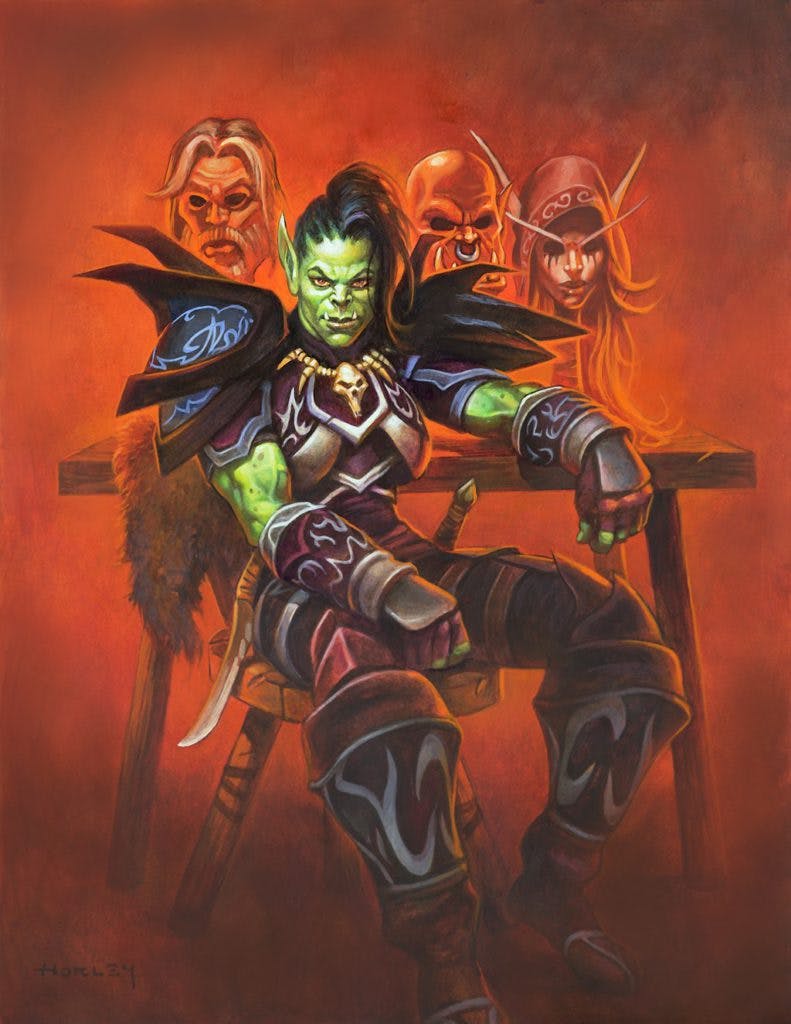
Before the game even starts, the deck revolves around one key, once-meme card: Maestra of the Masquerade. When Maestra is in your deck you begin every game as a random non-Rogue class. How quirky! But it turns out that this temporary class identity means that for every Rogue card you draw while as the new class, it reduces the mana cost of your Wildpaw Gnolls by (1).
Since the game, and most importantly your opponent, believes that you aren't a Rogue, the Rogue cards in your deck count as "cards from another class being added to your hand." Trade a Blackwater Cutlass? Draw another Rogue card, reduce your Gnolls by another (1). Coin Swindle? You just added two more Rogue cards to your hand (before Maestra reveals herself)-- reduce by (2)! Some psychos even Secret Passage on turn 1 to reduce by a whole lot more, but we'll get into that.
This is the mechanism by which the deck's wheels turn. Without it, the hallmark Gnolls would likely be unplayable (and/or played as they were intended).
For the very first weekend of Master's Tour Qualifiers, Thief Rogue dominated. As the most-banned deck AND the one with the highest win-rate, the deck was undeniably a force to be reckoned with. So what exactly makes this deck tick, and why is it so good?
Introducing the Thief Rogue Guide!
The "Traditional" Thief Rogue List
This version of Thief Rogue by Bunnyhoppor is technically "one card off"-- 29/30-- of the readily accepted list. The oddball here is a single Rustrot Viper over a second SI:7 Extortion, tradeable for tradeable, as a response to Weapon Rogue and Lightforged Cariel's "The Immovable Object." I like that it shows a sleight future sight, and a great example of a cut you might very well make depending on your meta.
But when all is said and done, this list contains the following important details:
- 2 Preparation
- 2 Swashburglar AND 2 Prize Plunderer
- No Tenwu
- 2 Wicked Stab
- Edwin over Kazakus or Scabbs / Frostwolf in the 4 drops
After that, the rest is super stock and essentially "locked in*" cards, including:
- 2 Shadowstep
- At least 3 Tradeables (always including 2 Blackwater Cutlass)
- Secret Passages, Wand Thiefs, Reconassaincez and Swindles for Value
- Wicked Stabs*, Double Agents, Gnolls and Edwin/Smite/Scabbs* to Kill You
The deck is a tried-and-true Tempo Deck: it develops its own game plan while removing your opponents. It features a steady curve that starts spending all of its mana efficiently from the very beginning and never lets go. Let's take a peek into the average Thief Rogue openers and mid-games.
Thief Rogue Play Patterns
The Mulligan
This deck has an extremely clean and frequently-successful mulligan. There is a straightforward list of Always Keeps, and a list of Never Keeps:
Always Keep: Blackwater Cutlass, SI:7 Extortion, Swashburglar, Reconnaissance, Double Agent, Wildpaw Gnoll (I'm not necessarily personally sold on Swashburglar, but the stats heavily favor it!)
Never Keep: Anything else!
Turn 1
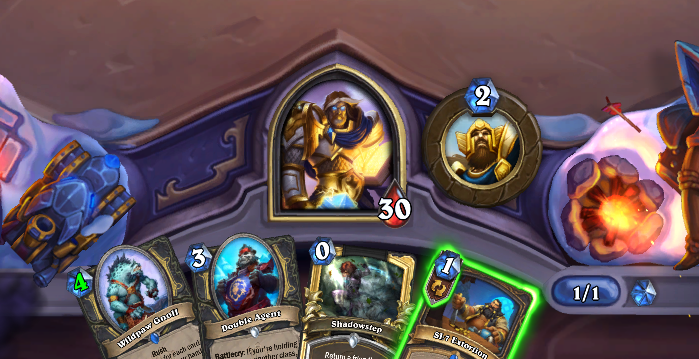
Every first turn hopes to be Trade a Cutlass or Extortion. This is part of what enables the super fast Gnoll openers-- Swashburglar and other early plays "reveal" your class, but Trading doesn't! Despite your opponent now knowing you're about to Gnoll them over, there's nothing they can do but hope they didn't punt their mulligan.
Turn 2
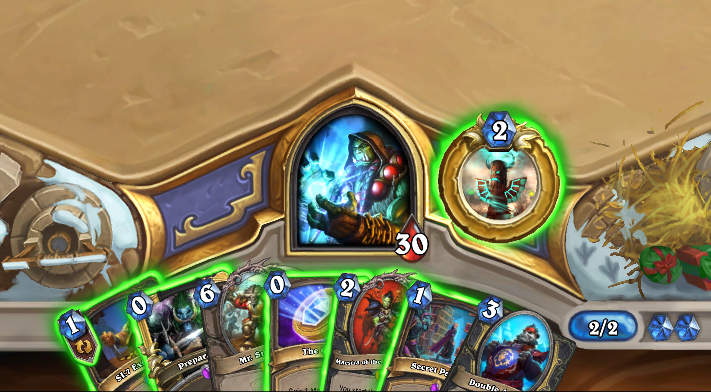
There are a couple distinct "good" plays for Turn 2:
- Coin Double Agent -- Coin doesn't break your Maestra, so this play is one of the best beatdown starts that you need for matchups like Ramp Druid and Mozaki Mage. "Two" mana for two 3/3s? Dealio.
- Reconnaissance -- This is one of my new favorite cards, despite it being so innocuous. Many of the best Deathrattle minions cost (5) right now... which means that Recon into 5 drop builds a curve for you! Some of the best hits you're looking for include: Greybough, The Rat King, Envoy Rustwix, Najak Hexxen, Felrattler, Astromancer Solarian, and Murgur Murgurgle. Even Spirit Guide from Priest draws you a Shadowstep when it dies!
- Value Gnoll -- It isn't uncommon to Trade once and play a Gnoll on Turn 2. Drawing a card for your turn brings them down to (4) mana, a Trade reduces them to (3), and then your Turn 2 draw reduces them to (2). This is unfortunately the play pattern that might warrant a nerf, since this feels a little too easy.
The traditional list doesn't have any Foxy Frauds, so Swindle also tends to wait until later on. Except for weird corner-case hands where you can afford to Swashburglar + Wand Thief to set up Gnolls, you want to try and aim for A Squeeze as soon as possible. You don't actually have infinite ways to win the late-game, despite sometimes feeling like you do!
Turn 3
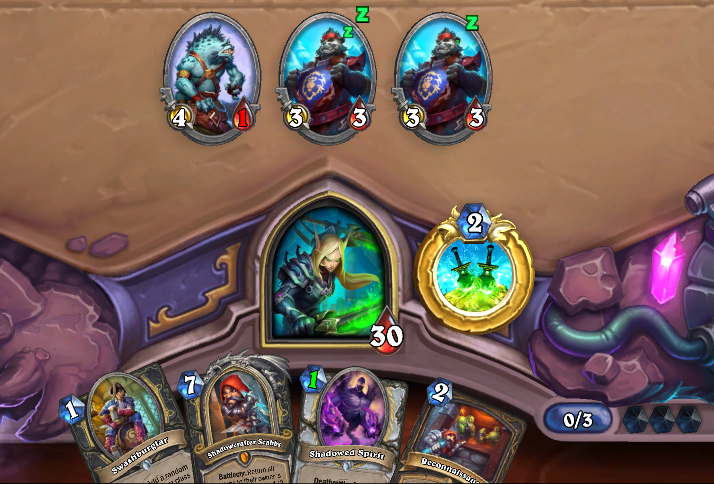
Most often this is your Double Agent turn, and in very rare circumstances you can go for Value Secret Passages. But be wary-- "2 Mana Remaining" tends to be just short of stringing together anything powerful. Try to Secret Passage with 3 or more mana left to spend while inside the tunnel, and don't forget that Trading while in a passage lets you keep the card!
Gnolls are coming down on Turn 3 very regularly at (0) or (1) mana, which is why board-based aggro decks really just can't compete with this deck. It's even very common to start ripping together "Prep + Swindle + Wand Thief + Prize Plunderer +..." and STILL play Gnolls. Most other decks begin to get going after or on this turn, but Thief Rogue gets a head start.
If your turn 3 is a whiff, the game is likely a disaster. The only time you're allowed to go for Value on this turn is if you already started putting together a good board on Turn 2. But value turns tend to include Reconaissance, picking up a big minion for down the road or Prep Recon to play it right away!
Turn 4+
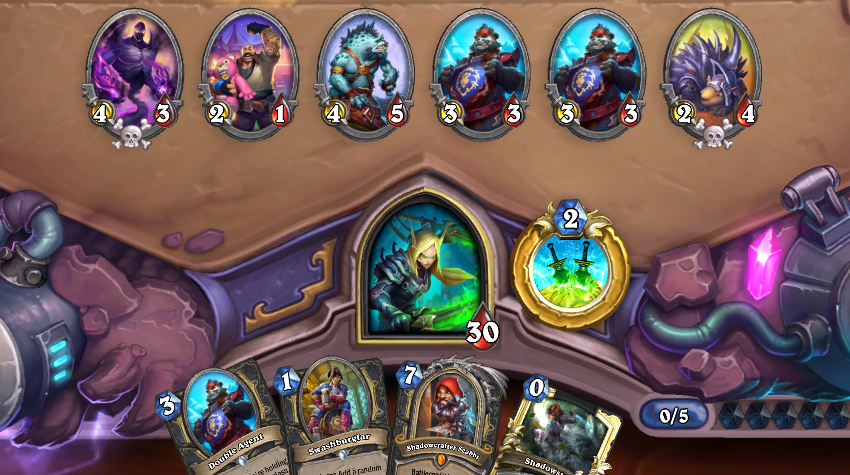
From here everything begins to spin into a wild menagerie of plays. By this point you're generating a lot of random value from other classes and your own deck. You're now deciding whether or not you need to look for Burn to end the game or settle in for a Midrange Throwdown.
The traditional lists play Wicked Stab in conjunction with Mr. Smite + Edwin for reach, but these have tricky windows to play. Mr. Smite gives Edwin and Prized Plunderers Charge, and is the premiere way to close out games. It's very common to jam Smite and Shadowstep him in order to set up a huge OTK with a buffed Edwin.
Wicked Stabs and a huge Shadowcrafter Scabbs swing are your Emergency Buttons that you can begin carefully planning for once you've determined a path to victory!
This deck features one of the best parts about being a Rogue: familiarity with your opponents' strategies directly rewards you, should you navigate it well.
The Bonus Mullahoo List for a Thief Rogue

What's a Mullahoo article without some spice? I've used the term "heresy" to define a deck that cuts "absolutely uncuttable" cards seen copy-pasted into every deck-- and I love doing it. In this case, I played a 50+ game sample size without Shadowcrafter Scabbs in my deck-- and sported a 60% win rate straight into Top 1000 Legend.
In many ways what this really showed was the power of Gnolls alone, capable of carrying this hard without Hero Scabbs. But my average game length was turn 7-- not only was the game being decided far before The Shadowcrafter came down, but I actively didn't want it in my hand for every turn of the game leading up to the end. This iteration leans on the full power of minion-centric mana cheat to establish a board, not pick one up.
Joining his majesty in exile was my favorite card to cut from my decks in all of Hearthstone: Wicked Stab. Eviscerate this is not, and I won't wax too long about it again. But fundamentally the card is an incredibly bad one until the very late game; at a point where, from as soon as I saw that foul thing touch my hand, I desperately wished it had been anything else.
This funky version of Thief Rogue is much more of a "resource-dense" combo deck, and we want as many of our opening cards to be a part of our critical mass as we can get. Cutting Hero Scabbs and Stab meant more of our opening gambit hands were online, which meant wins.
What did we get to gain?
So what were the biggest changes as a result of this heresy?
- 2 Foxy Frog-- err, Fraud ("0 mana 3/2")
- Vanessa VanCleef (The best beatdown minion to combo off of the Frog-- steal Cloak of Shadows, Gnolls!)
- 2 Frostwolf Warmasters ("0 mana 3/2")
- Scabbs Cutterbutter ("0 mana 3/3 + *Gunshot Gunshot Gunshot Cash Register Noise*")
You end up with an extremely explosive aggro deck that takes advantage of the real broken card in Thief Rogue: Wildpaw Gnoll. But now you create Turn 2s and 3s that suddenly put 12, 15, 18 power on board thanks to Scabbs and Frostwolves.
In a meta """dominated""" by other aggro decks like Face Hunter, Beast Druid, and Pirate Warrior, all of those are byes for this deck. You simply go too fast and hold the board too well! Against Control like Guff Druid and even Warlock, one must simply Jam. You are here to play 6 cards on Turn 2-- make them have it. And for the "mirror"? You try to be faster than them, as a good way to win mirrors is either go "a turn slower" or "a turn faster."
I hope you all enjoyed this article until, fortunately or otherwise, some nerfs roll through. But as long as Reconaissance is legal, I'm still excited to play with this archetype in the future.
Good luck and stay tuned at esports.gg for more Hearthstone news and guides!